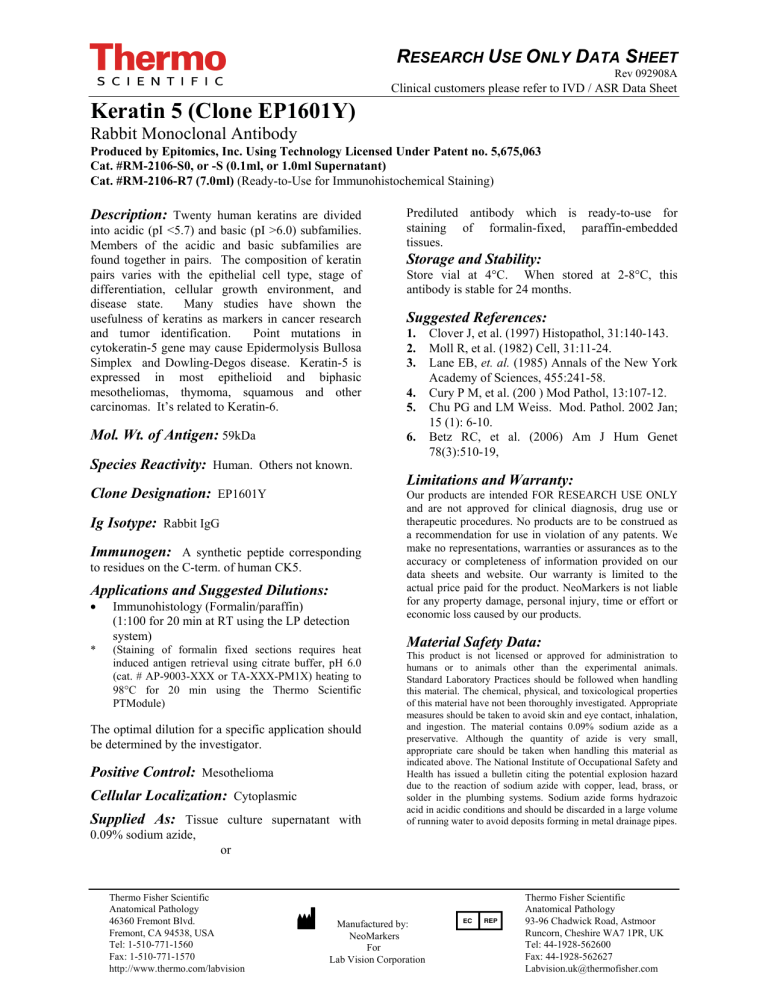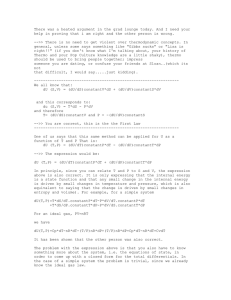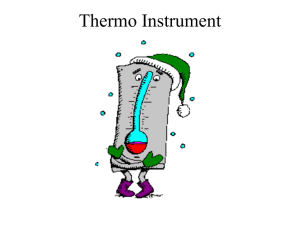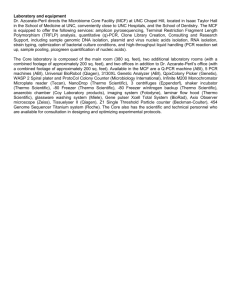Keratin 5 (Clone EP1601Y)

R
ESEARCH
U
SE
O
NLY
D
ATA
S
HEET
Rev 092908A
Clinical customers please refer to IVD / ASR Data Sheet
Keratin 5 (Clone EP1601Y)
Rabbit Monoclonal Antibody
Produced by Epitomics, Inc. Using Technology Licensed Under Patent no. 5,675,063
Cat. #RM-2106-S0, or -S (0.1ml, or 1.0ml Supernatant)
Cat. #RM-2106-R7 (7.0ml) (Ready-to-Use for Immunohistochemical Staining)
Description:
Twenty human keratins are divided into acidic (pI <5.7) and basic (pI >6.0) subfamilies.
Members of the acidic and basic subfamilies are found together in pairs. The composition of keratin pairs varies with the epithelial cell type, stage of differentiation, cellular growth environment, and disease state. Many studies have shown the usefulness of keratins as markers in cancer research and tumor identification. Point mutations in cytokeratin-5 gene may cause Epidermolysis Bullosa
Simplex and Dowling-Degos disease. Keratin-5 is expressed in most epithelioid and biphasic mesotheliomas, thymoma, squamous and other carcinomas. It’s related to Keratin-6.
Mol. Wt. of Antigen:
Species Reactivity:
Clone Designation:
Ig Isotype:
Rabbit IgG
Immunogen:
A synthetic peptide corresponding to residues on the C-term. of human CK5.
Applications and Suggested Dilutions:
• Immunohistology (Formalin/paraffin)
(1:100 for 20 min at RT using the LP detection system)
* (Staining of formalin fixed sections requires heat induced antigen retrieval using citrate buffer, pH 6.0
(cat. # AP-9003-XXX or TA-XXX-PM1X) heating to
98 ° C for 20 min using the Thermo Scientific
PTModule)
The optimal dilution for a specific application should be determined by the investigator.
Positive Control:
59kDa
Human. Others not known.
EP1601Y
Mesothelioma
Cellular Localization:
Cytoplasmic
Prediluted antibody which is ready-to-use for staining of formalin-fixed, paraffin-embedded tissues.
Storage and Stability:
Store vial at 4°C. When stored at 2-8°C, this antibody is stable for 24 months.
Suggested References:
1. Clover J, et al. (1997) Histopathol, 31:140-143.
2. Moll R, et al. (1982) Cell, 31:11-24.
3. Lane EB, et. al.
(1985) Annals of the New York
Academy of Sciences, 455:241-58.
4. Cury P M, et al. (200 ) Mod Pathol, 13:107-12.
5. Chu PG and LM Weiss. Mod. Pathol. 2002 Jan;
15 (1): 6-10.
6. Betz RC, et al. (2006) Am J Hum Genet
78(3):510-19,
Limitations and Warranty:
Our products are intended FOR RESEARCH USE ONLY and are not approved for clinical diagnosis, drug use or therapeutic procedures. No products are to be construed as a recommendation for use in violation of any patents. We make no representations, warranties or assurances as to the accuracy or completeness of information provided on our data sheets and website. Our warranty is limited to the actual price paid for the product. NeoMarkers is not liable for any property damage, personal injury, time or effort or economic loss caused by our products.
Material Safety Data:
This product is not licensed or approved for administration to humans or to animals other than the experimental animals.
Standard Laboratory Practices should be followed when handling this material. The chemical, physical, and toxicological properties of this material have not been thoroughly investigated. Appropriate measures should be taken to avoid skin and eye contact, inhalation, and ingestion. The material contains 0.09% sodium azide as a preservative. Although the quantity of azide is very small, appropriate care should be taken when handling this material as indicated above. The National Institute of Occupational Safety and
Health has issued a bulletin citing the potential explosion hazard due to the reaction of sodium azide with copper, lead, brass, or solder in the plumbing systems. Sodium azide forms hydrazoic acid in acidic conditions and should be discarded in a large volume
Supplied As:
Tissue culture supernatant with
0.09% sodium azide, of running water to avoid deposits forming in metal drainage pipes. or
Thermo Fisher Scientific
Anatomical Pathology
46360 Fremont Blvd.
Fremont, CA 94538, USA
Tel: 1-510-771-1560
Fax: 1-510-771-1570 http://www.thermo.com/labvision
Manufactured by:
NeoMarkers
For
Lab Vision Corporation
Thermo Fisher Scientific
Anatomical Pathology
93-96 Chadwick Road, Astmoor
Runcorn, Cheshire WA7 1PR, UK
Tel: 44-1928-562600
Fax: 44-1928-562627
Labvision.uk@thermofisher.com
R
ESEARCH
U
SE
O
NLY
D
ATA
S
HEET
Rev 092908A
Clinical customers please refer to IVD / ASR Data Sheet
Keratin 5 (Clone EP1601Y)
Rabbit Monoclonal Antibody
Produced by Epitomics, Inc. Using Technology Licensed Under Patent no. 5,675,063
Cat. #RM-2106-S0, or -S (0.1ml, or 1.0ml Supernatant)
Cat. #RM-2106-R7 (7.0ml) (Ready-to-Use for Immunohistochemical Staining)
Formalin-fixed, paraffin-embedded human mesothelioma stained with Keratin 5 (Cat. #RM-2106-S) using peroxidase-conjugate and
DAB chromogen. Note cytoplasmic staining.
For Research Use Only
Thermo Fisher Scientific
Anatomical Pathology
46360 Fremont Blvd.
Fremont, CA 94538, USA
Tel: 1-510-771-1560
Fax: 1-510-771-1570 http://www.thermo.com/labvision
Manufactured by:
NeoMarkers
For
Lab Vision Corporation
Thermo Fisher Scientific
Anatomical Pathology
93-96 Chadwick Road, Astmoor
Runcorn, Cheshire WA7 1PR, UK
Tel: 44-1928-562600
Fax: 44-1928-562627
Labvision.uk@thermofisher.com





